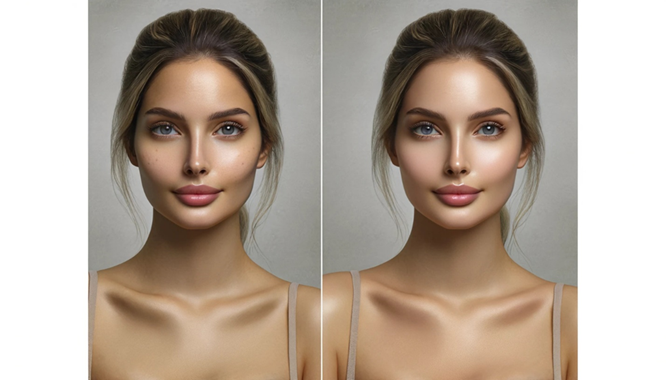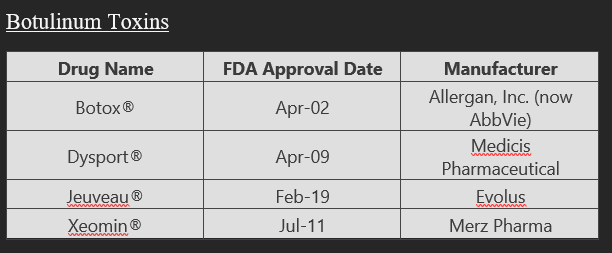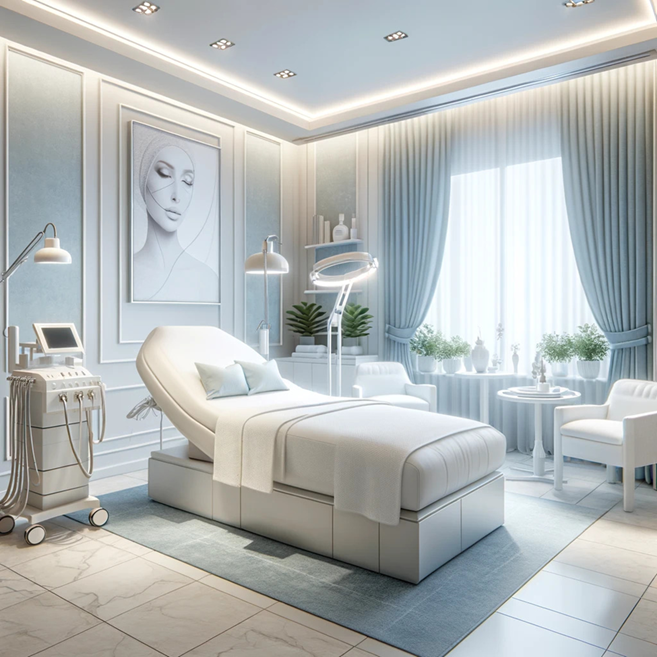The integration of medi-spa services and aesthetic treatments as fundamental components of mental health and wellbeing is gaining unprecedented momentum. This transformative trend not only redefines traditional perceptions of beauty and self-care but also highlights the intrinsic value of vitality and its profound impact on our psychological state. As we delve into the future of medi-spa and aesthetics, it becomes imperative to explore the scientific underpinnings that advocate for their inclusion in holistic health paradigms and health benefit designs.
The Science of Aesthetics and Mental Wellbeing
What do we make of any industry with entirely elective services? It’s what people choose to spend their money on, right? Here is one perspective on body image, shame, and perception of self. It’s important to acknowledge that the opportunity in medi-spa is very likely a byproduct of media and culture. I won’t explore the ethical component of cosmetic procedures here, but rather an offshoot idea about how benefit dollars could be spent toward helping improve the mental health and well-being of individuals that truly believe in the benefits of care they’re being provided. The evidence is sparse, but the dollars are talking. The medi-spa industry is set to grow @ a CAGR of 14.7%, from $16.3B in 2022 to $63.4B by 2032, according to Acumen Research Consulting.

Navigating the Risks: A Commitment to Safety and Excellence
While the perceived benefits of medi-spa treatments are compelling, the paramount importance of safety cannot be overstated. The use of injectables and other non-surgical interventions carries inherent risks, including infection and adverse reactions. Proper reconstitution, aseptic technique, dosing frequency and monitoring are all essential to reduce risk. Botulinum toxin treatment for cosmetic use is significantly less likely to cause severe side effects (due to lower dose than therapeutic treatment) Regardless of intended use, evidence-based practice and ongoing staff training are essential to mitigate risks and ensure patient safety and satisfaction.

- Botox®, also known as onabotulinumtoxinA, is the most widely recognized brand and has been approved for cosmetic use in treating frown lines, forehead lines, and crow’s feet. It’s produced by Allergan, Inc., and holds a significant market share.
- Dysport® known as abobotulinumtoxinA, is appreciated for its slightly faster onset and is ideal for treating larger areas like the forehead. It is produced by Medicis Pharmaceutical and was first approved for cosmetic use in treating frown lines.
- Jeuveau® or prabotulinumtoxinA, is the newest among the listed neurotoxins and was approved exclusively for cosmetic use. It’s marketed by Evolus and is positioned as a direct competitor to Botox®, offering similar effects and targeting a younger demographic with a more aggressive pricing strategy.
- Xeomin®, known as incobotulinumtoxinA, stands out because it does not contain any complexing proteins, making it a ‘purer’ form of botulinum toxin. Produced by Merz Pharma, it’s used for treating frown lines and is notable for not requiring refrigeration, which can be advantageous in certain clinical settings
These neurotoxins share the common active ingredient of botulinum toxin type A but differ in their formulations, onset times, and diffusion rates, affecting their suitability for different injection sites and patient preferences.

Vitality as a Pillar of Health: Advocating for Broader Benefit Design
Considering the potential for tangible mental health benefits associated with medi-spa treatments, there is an exploratory case for the inclusion of aesthetic services in health benefit designs. Forward-thinking health insurance policies could offer fringe wellness benefits, allowing individuals to allocate funds towards medi-spa services. This innovative approach not only recognizes the holistic nature of health but also empowers individuals to make personalized choices in their wellbeing journey, aligning with contemporary shifts towards patient-centered care. Who best decides how dollars are spent than the beneficiaries themselves? This is could also be a part of a radical shift from the current setup that incorporates reliable premium collection, forecasting and a lot of cross-subsidizing adversely effected populations. Elective spending may offer more benefits for well-being than anticipated.
The Future is Bright: Embracing Aesthetics in Mental Health Strategies
As we look to the future, the integration of medi-spa and aesthetics into mental health strategies presents a frontier ripe with potential. The emphasis on vitality and the active pursuit of wellness reflect a broader cultural shift towards embracing all facets of health. By prioritizing these services, we acknowledge the symbiotic relationship between physical appearance and psychological wellbeing, offering a more nuanced and compassionate approach to healthcare.
In advocating for this paradigm shift, it is vital to begin dialogue with healthcare professionals, policymakers, and insurance providers, employee health group sponsors, brokers and any player in the benefit industry. The development of evidence-based guidelines, value-based care models and the inclusion of medi-spa services in health benefit designs demand collaborative efforts and commitment to innovation.

Names to know for trading
- Allergan: Known for producing Botox, Allergan had a significant presence in the aesthetics market. Beyond cosmetic enhancements, their portfolio includes treatments for a wide range of health issues, underscoring a commitment to improving life quality. Allergan was acquired by AbbVie in 2020.
- Galderma: Specializing in dermatological treatments, Galderma offers a variety of products for skin health, including corrective and aesthetic treatments. Their focus on science-based solutions for skin health places them at the intersection of vitality and wellness.
- Merz Pharmaceuticals: With a focus on aesthetics and neurotoxin therapy, Merz develops products that address unmet needs in movement disorders, aesthetics, and dermatology, promoting a holistic approach to health and wellness.
- Nestlé Skin Health: A division of Nestlé, one of the world’s largest food and wellness companies, Nestlé Skin Health focuses on a range of dermatological conditions and aesthetic treatments, reflecting a broader commitment to health and wellness.
- Johnson & Johnson: Through its broad range of consumer health products, medical devices, and pharmaceuticals, Johnson & Johnson addresses various aspects of health and wellbeing, including skin health and beauty.
- Pfizer Consumer Healthcare: Part of Pfizer, this division offers dietary supplements and non-prescription health products that support a proactive approach to health and wellness.
- Sanofi Consumer Health: Sanofi’s consumer health division provides vitamins, minerals, and supplements, alongside a range of over-the-counter medicines, emphasizing the importance of preventative care in maintaining vitality.
- Amgen: With a diverse portfolio that includes treatments for chronic illnesses, Amgen’s focus on breakthrough medical innovations is key to enhancing quality of life for patients around the world.
- Novartis: Their broad portfolio, including treatments for skin conditions and technological advancements in healthcare, demonstrates Novartis’s commitment to medical aesthetics and holistic health solutions.
- L’Oréal Active Cosmetics Division: While primarily known as a beauty brand, L’Oréal’s Active Cosmetics Division develops dermo-cosmetic products supported by scientific research, blending wellness, beauty, and health.
Conclusion
The intersection of medi-spa, aesthetics, and mental health represents a burgeoning field that challenges conventional healthcare models and invites us to envision a more inclusive and holistic future. By prioritizing vitality and embracing the therapeutic benefits of aesthetic treatments, we pave the way for a healthcare landscape that values comprehensive wellbeing. As this trend continues to gain traction, it becomes increasingly important to advocate for safe practices, rigorous standards, and the integration of these services into broader health benefit plans. The future of medi-spa and aesthetics as pivotal elements of mental health and wellbeing is not only promising but essential in our collective pursuit of a healthier, happier society.







